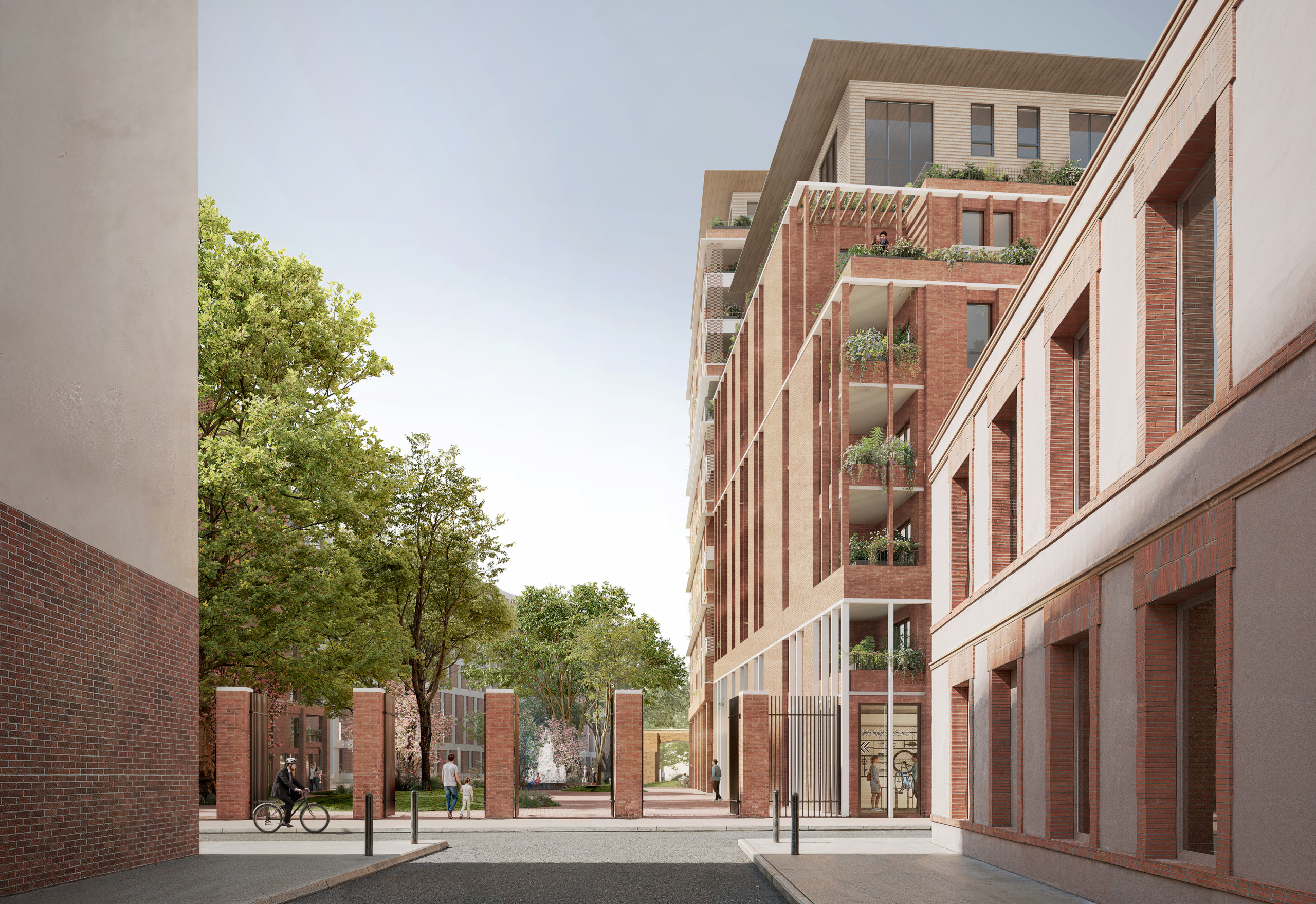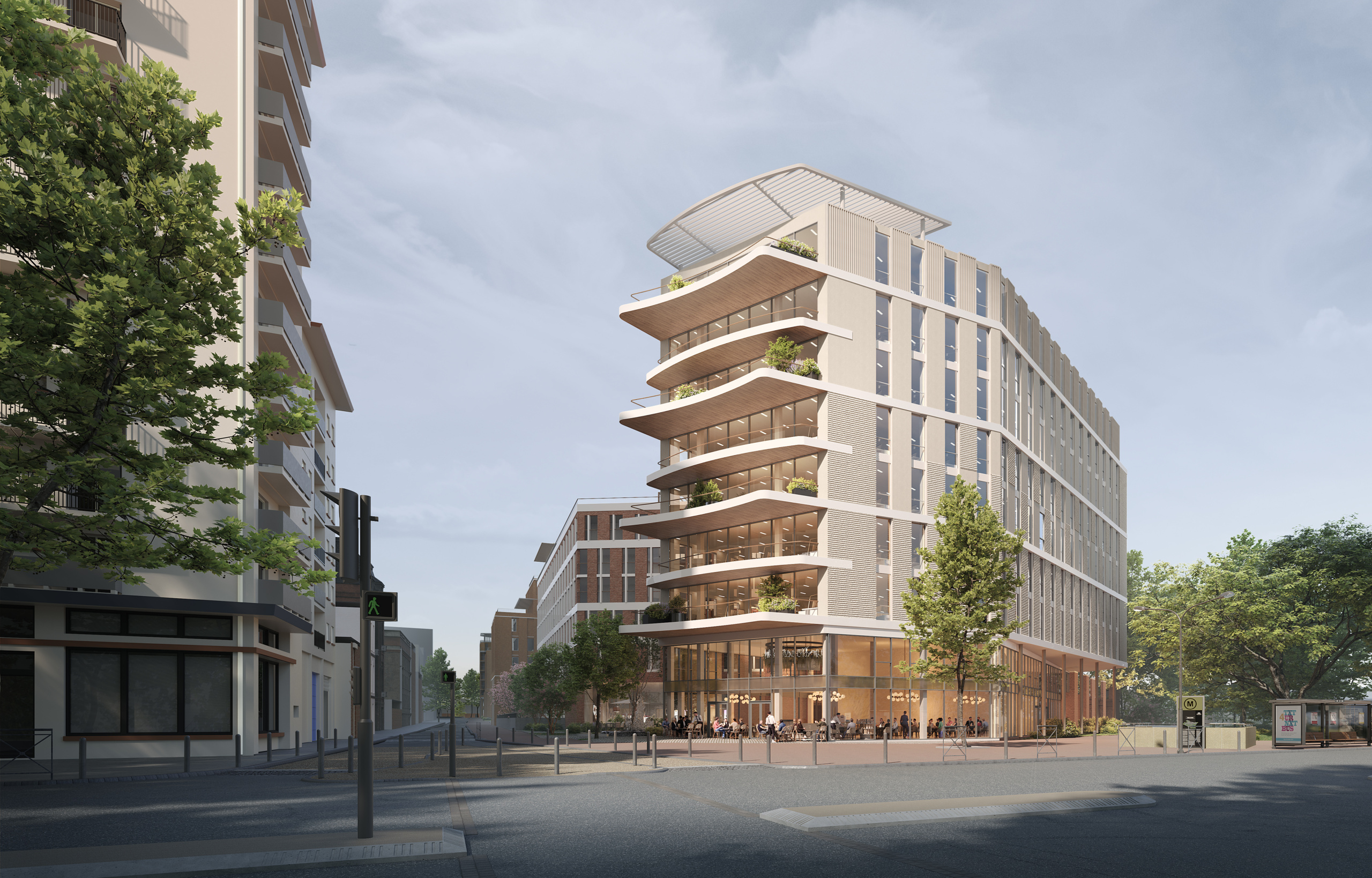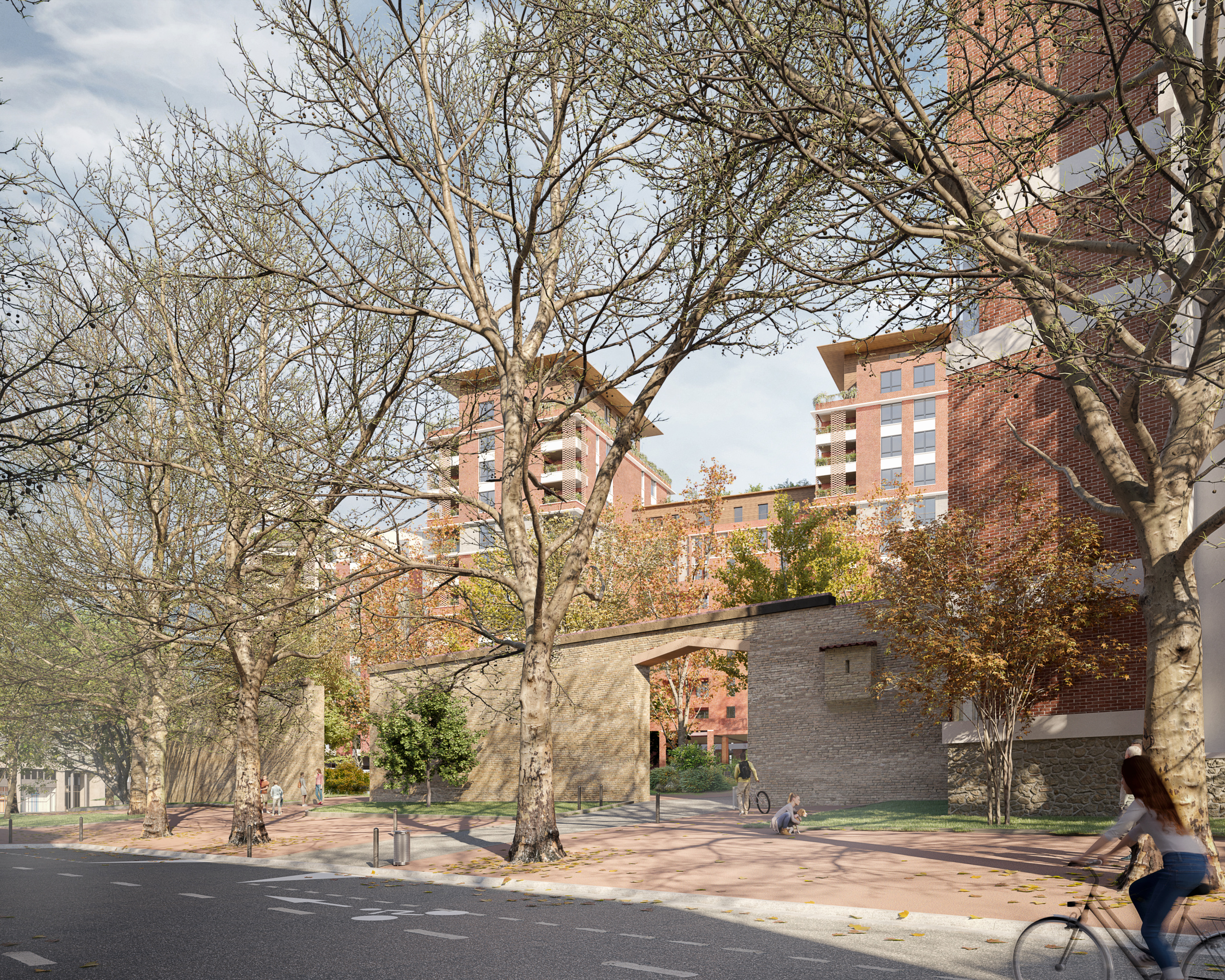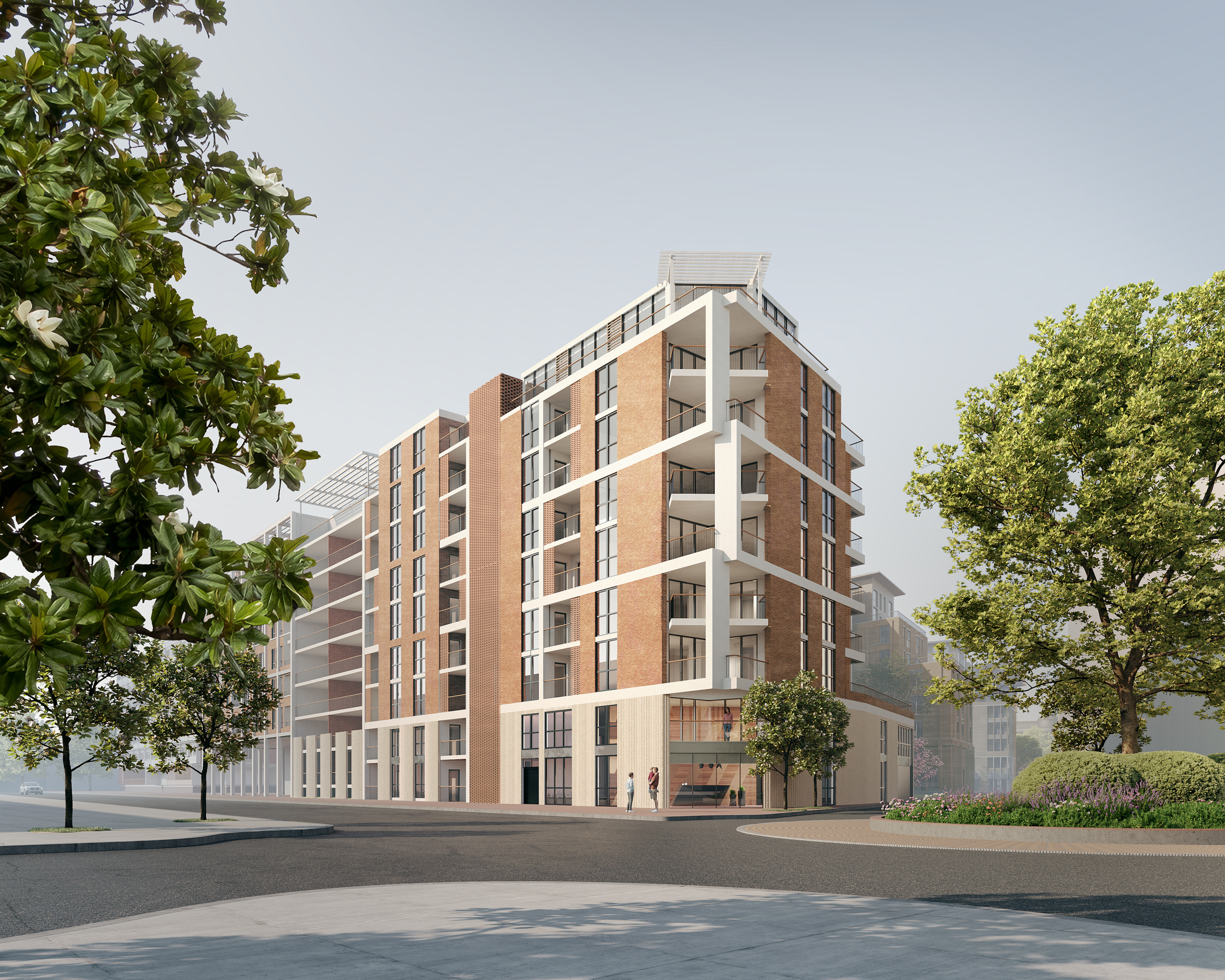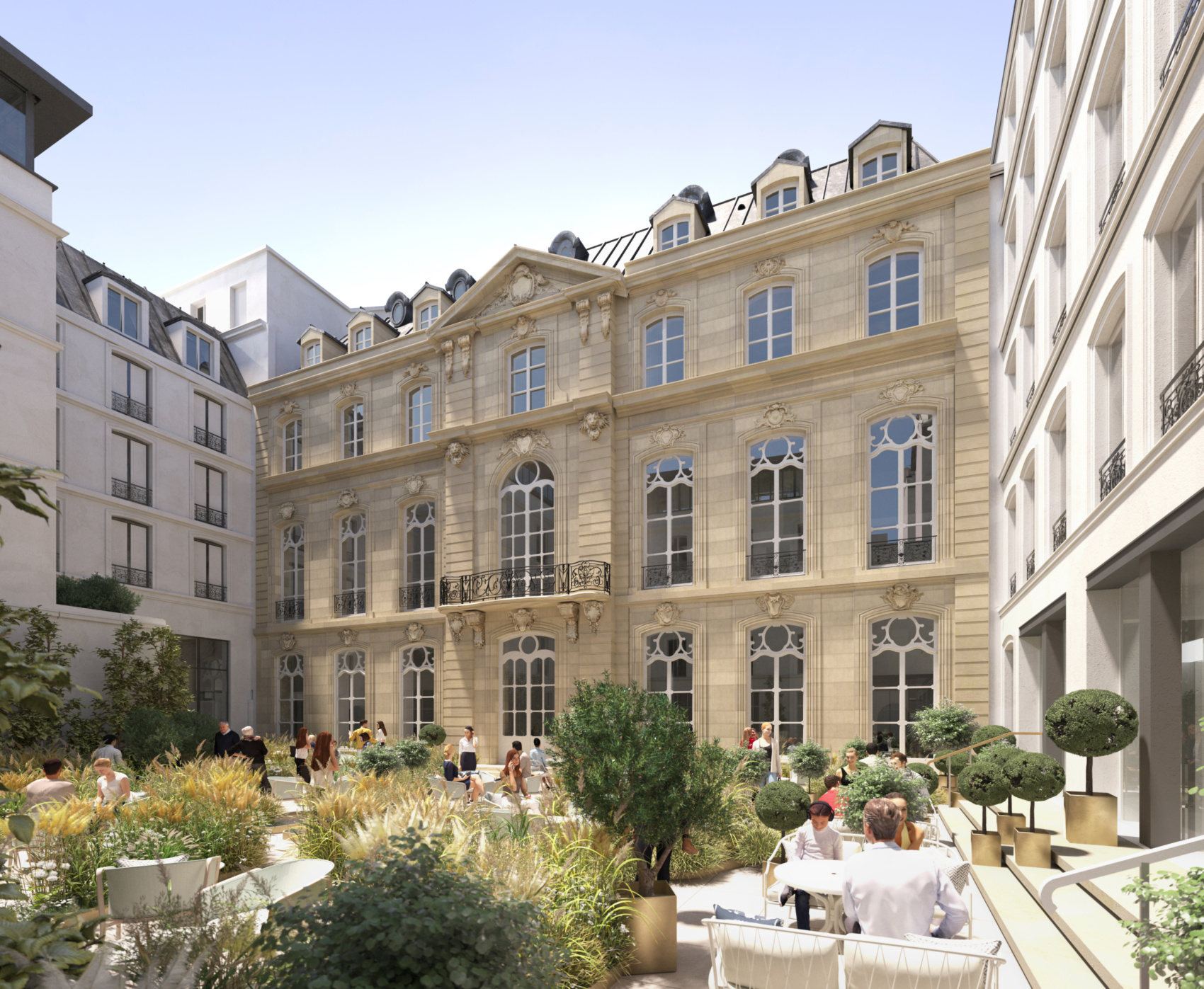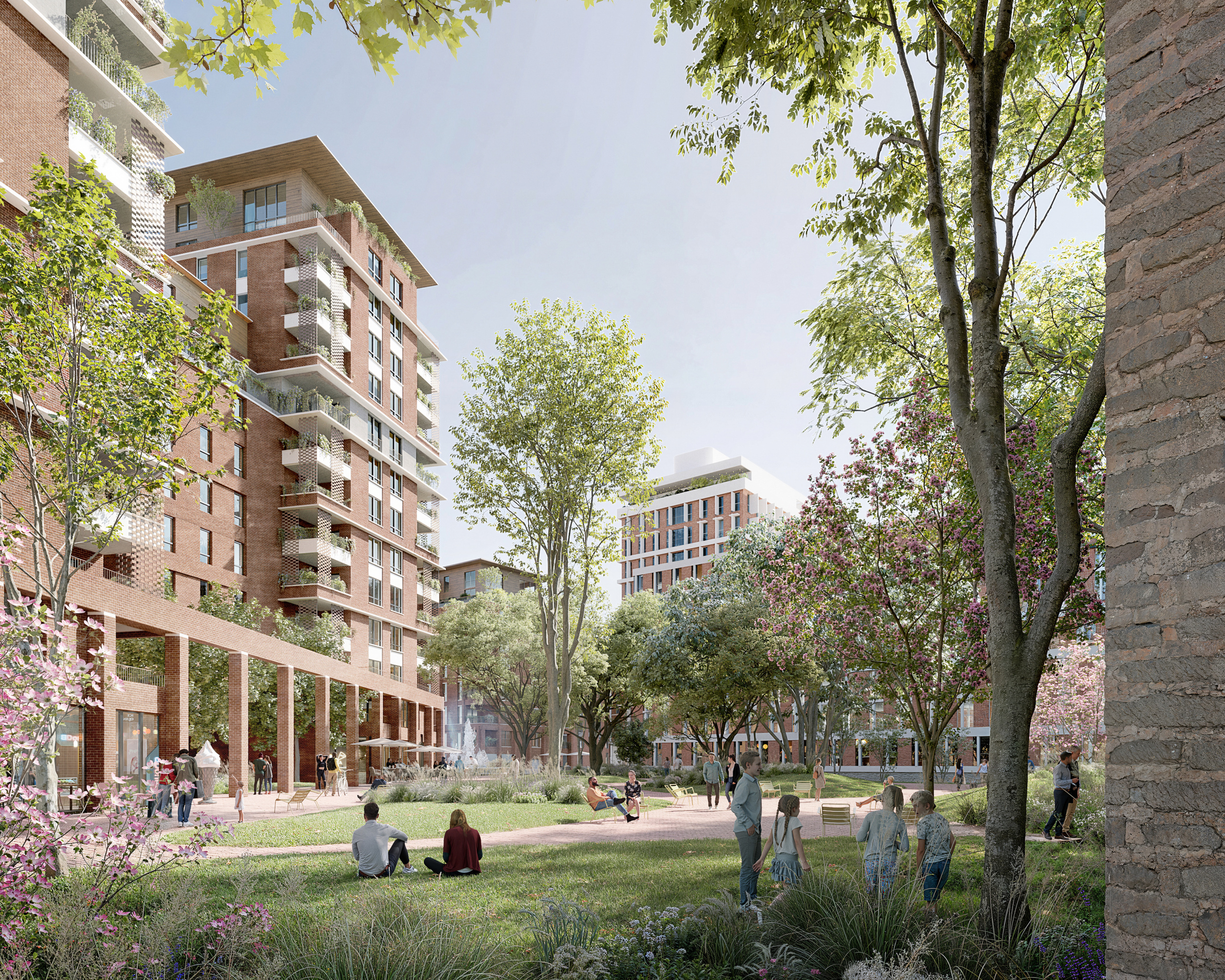
Compans-Caffarelli
Former Toulouse Administrative City
The transformation of the Cité Administrative is also an opportunity to implement an architectural approach that engages in a dialogue with the area’s diverse styles, while reinterpreting key elements of Toulouse’s architectural tradition. The project is designed as a balanced, layered, and coherent composition at the neighborhood scale. Each building will have its own contemporary identity while adhering to shared historical principles: ground-floor colonnades, buttresses, structured window patterns, cornices, attics, and sun-shading devices. All façades will be clad in brick, accentuated by elements in white concrete.
Several existing buildings from the 1960s—of high architectural quality and already aligned with this design philosophy—will be preserved, along with the 12th-century ramparts, which serve as key structuring elements of the project. The site’s new program will integrate family and student housing, office space, retail, and a health center around the park, transforming the former single-use complex into a vibrant, green, and mixed-use neighborhood.
The project prioritizes low-carbon materials, bioclimatic housing design, and the removal of impermeable surfaces to support biodiversity and improve resilience to climate change.

